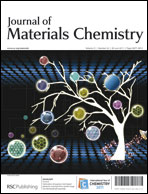Toward nanostructured thermoelectrics: synthesis and characterization of lead telluride gels and aerogels†
Abstract
The synthesis and characterization of lead telluride (PbTe) gels and aerogels with nanostructured features of potential benefit for enhanced thermoelectrics is reported. In this approach, discrete thiolate-capped PbTe


 Please wait while we load your content...
Please wait while we load your content...